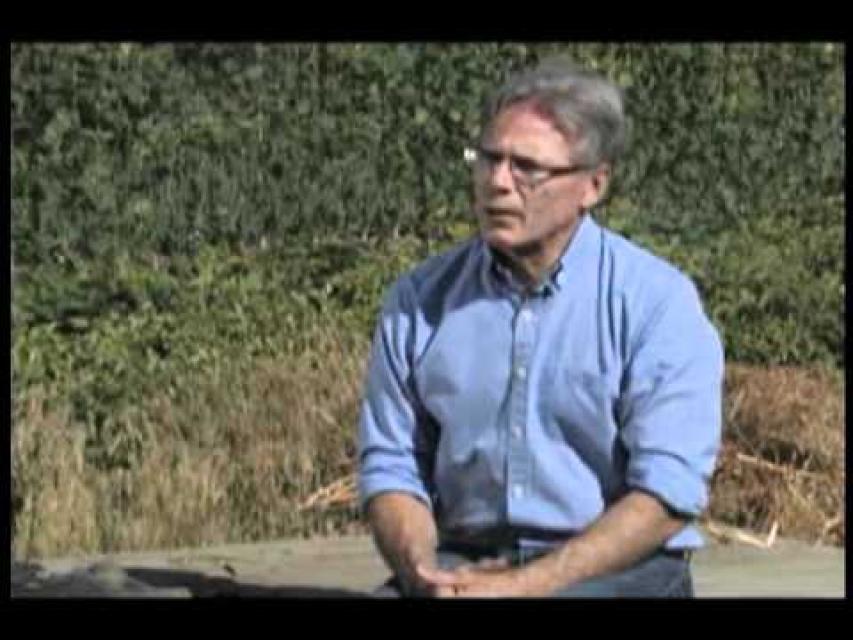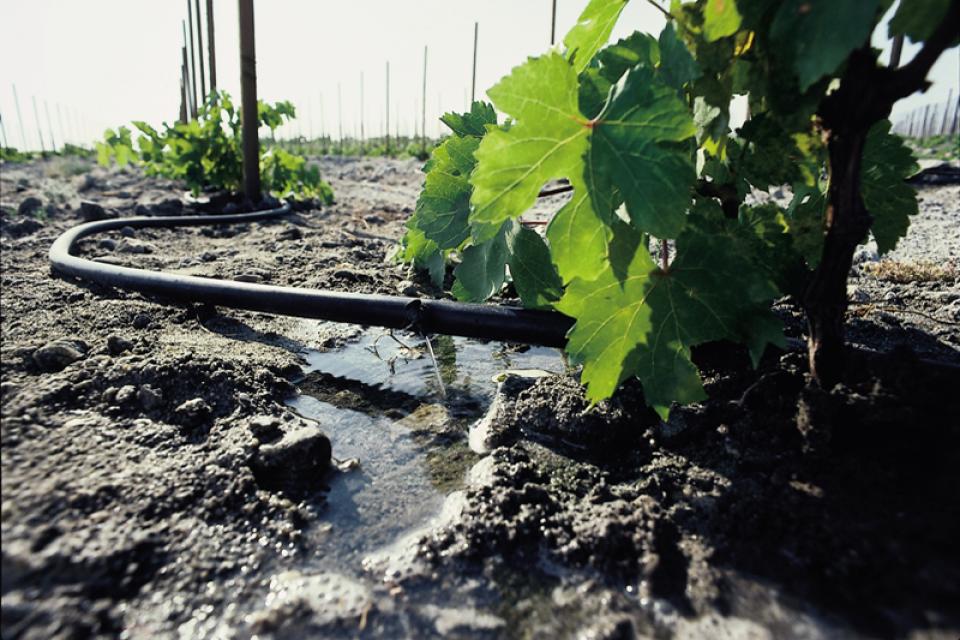Agricultural Conservation
As the single largest water-consuming industry, agriculture has become a focal point for efforts to promote water conservation. In turn, discussions about agricultural water use often become polarized.
With this in mind, the drive for water use efficiency has become institutionalized in agriculture through numerous federal, state and local programs.
Agricultural Water Management
Since the 1980s, some water districts serving agricultural areas have developed extensive water conservation programs to help their customers. One of the largest, the 1,000-square-mile Westlands Water District, has its own water conservation coordinator and a water management specialist who provide practical information and technical assistance to farmers on a variety of water conservation topics specific to local conditions [see also Agricultural Drainage and the San Joaquin Valley].
Rainfall in California rarely occurs during the peak growing season in the areas of heaviest cultivation, so farmers rely almost entirely on artificial “rainfall,” or irrigation water.
There are three common irrigation methods used in California: furrow or flood, sprinklers and drip. A farmer’s choice of irrigation methods is determined primarily by three factors: the type of soil to be irrigated; the topography of the land; and the crop to be grown.
In the flat Central Valley, farmers producing row crops grown in slow-draining soils traditionally have used flood or furrow irrigation. Sprinklers or drip irrigation systems typically are chosen for hilly coastal areas where soils tend to be more porous.
Most farmers in California use nonpressurized surface irrigation techniques such as border (flood) or furrow irrigation. Furrow irrigation systems are inexpensive, well understood by farmers and can be efficient, but critics say they are prone to overwatering if not properly designed and managed. Laser field leveling can improve the efficiency of furrow systems, which are commonly used in the flat Central Valley.
Pressurized systems such as surface drip irrigation or sprinklers, though more costly to install and operate than furrow techniques, apply water more slowly and accurately, giving growers more flexibility to apply the amount of water needed for optimal plant growth. Properly managed, sprinkler and drip systems also result in less surface runoff on fields with compacted soils where water permeates more slowly than in porous soils.
Surface drip irrigation systems have become increasingly popular, especially for perennial commodities such as grapes, but are not cost-effective for some annual field crops such as grains. Subsurface drip irrigation systems deliver water directly to the root zone with almost no surface evaporation loss. However, these systems are expensive to install and may not be suitable for all crops.
Regardless which irrigation system is used, experts say an irrigation management program is the single most effective step to ensure that water is used efficiently. Federal and state programs provide low-interest loans, tax incentives and cost sharing to assist in the conversion of inefficient irrigation systems [see also Agricultural Drainage].
Environmentalists cite practices such as flood or furrow irrigation, in which entire fields or furrows are covered with water that is allowed to soak unevenly into the soil, as evidence of inefficient use.
But farmers counter that the real issue is not the type of irrigation used or crop choices, it is the efficient management of an irrigation system. If managed properly, they say, the flood and furrow irrigation techniques in use in many areas are efficient. Farmers say crop choice is — and should continue to be — determined by the market forces of supply and demand, and not be mandated by water use.
Agricultural Conservation Programs and Assistance
The computerized California Irrigation Management Information System operated by the state Department of Water Resources uses more than 145 automated stations across the state to gather weather data farmers can use to gauge the amount of water their crops need on a daily basis.
The primary goal of CIMIS is to provide data on the rate of evapotranspiration, which is the loss of water through evaporation and transpiration.
Some irrigation districts and water agencies also participate in a number of mandatory and conditional efficient water management practices. These measures include construction and operation of tailwater (excess surface water from cultivation) reuse systems, automation of canal structures, and installation of water meters to measure the volume of water delivered to individual water users. Accurate water use data are considered critical to the design and operation of effective water management plans.
Agricultural water districts that contract with the Bureau of Reclamation for 2,000 or more acre-feet of irrigable water must prepare water management plans and update those plans every five years.
Each district’s plan is required to include a description of the water district, an inventory of its water resources and uses of those resources, and a list of best management practices the district will follow to ensure efficient water use. Critical best management practices include use of equipment to measure the volume of water delivered, adoption of a pricing structure based at least in part on the quantity of water delivered, designation of staff to implement the water management plan, and provision of water management services for farmers in the forms of data, educational programs, and on-farm water use evaluations.










